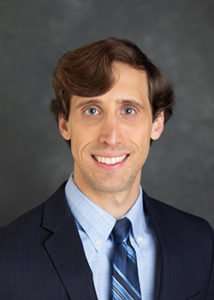 The Department of Nuclear Engineering welcomes Michael Liesenfelt to the faculty as a research assistant professor after six years in industry. Liesenfelt’s research broadly covers all advanced radiographic, imaging, detection, and non-destructive testing (NDT) methods.
The Department of Nuclear Engineering welcomes Michael Liesenfelt to the faculty as a research assistant professor after six years in industry. Liesenfelt’s research broadly covers all advanced radiographic, imaging, detection, and non-destructive testing (NDT) methods.
“We are very pleased to have Research Assistant Professor Michael Liesenfelt join the UTNE program,” said Department Head Wes Hines. “He has tremendous dedication and drive to advancing nuclear technology to improve human health and safety, and we’re certain he will have a positive impact on our students.”
He received a bachelor’s degree in nuclear engineering in 2006, a master’s degree in nuclear engineering in ’09, and a doctoral degree in nuclear engineering in ’16, all from the University of Florida.
Liesenfelt has worked in nuclear reactor neutronics high performance computing (HPC) codes and methods at Areva NP (’09-’11), in nuclear security and advanced radiography at Nucsafe in Oak Ridge TN (’11-’12), and in railroad infrastructure inspection at the Georgetown Rail Equipment Company (’14-’19). His dissertation work contributed to the commercial success of Aurora Xi, an R&D100 award-winning high-speed X-ray backscatter inspection solution.
“I’m excited to make the future UT linear accelerator facility (LAF) into the largest, highest energy CT scanner at any university in the US,” he said. “Advancing high-speed cargo scanning with dual/multi-energy methods at the UT LAF can help make sure a nuclear black-swan event never happens.”
He also hopes to help industry advance portable hand-held X-ray backscatter imagers to stop drugs, guns, human trafficking, and money smuggling at our borders. Additionally, he will support high-energy neutron radiography NDT methods for the Y-12 national security complex and assist the new UT medical physics program by advancing medical imaging technology.
“Since the 1970s, computed tomography has changed medicine, saved countless lives, and won a Nobel Prize. However, the methods are limited, bound to a central axis, and assumes all X-rays are in one energy group,” he said. “I intend to lead the effort to update traditional CT methods for continuous energy physics, scatter physics, and the real-time ray-tracing GPU revolution.”
Liesenfelt will focus on partnering and delivering innovations to industry, developing students with deep hands-on experience, and supporting other researchers and national labs.